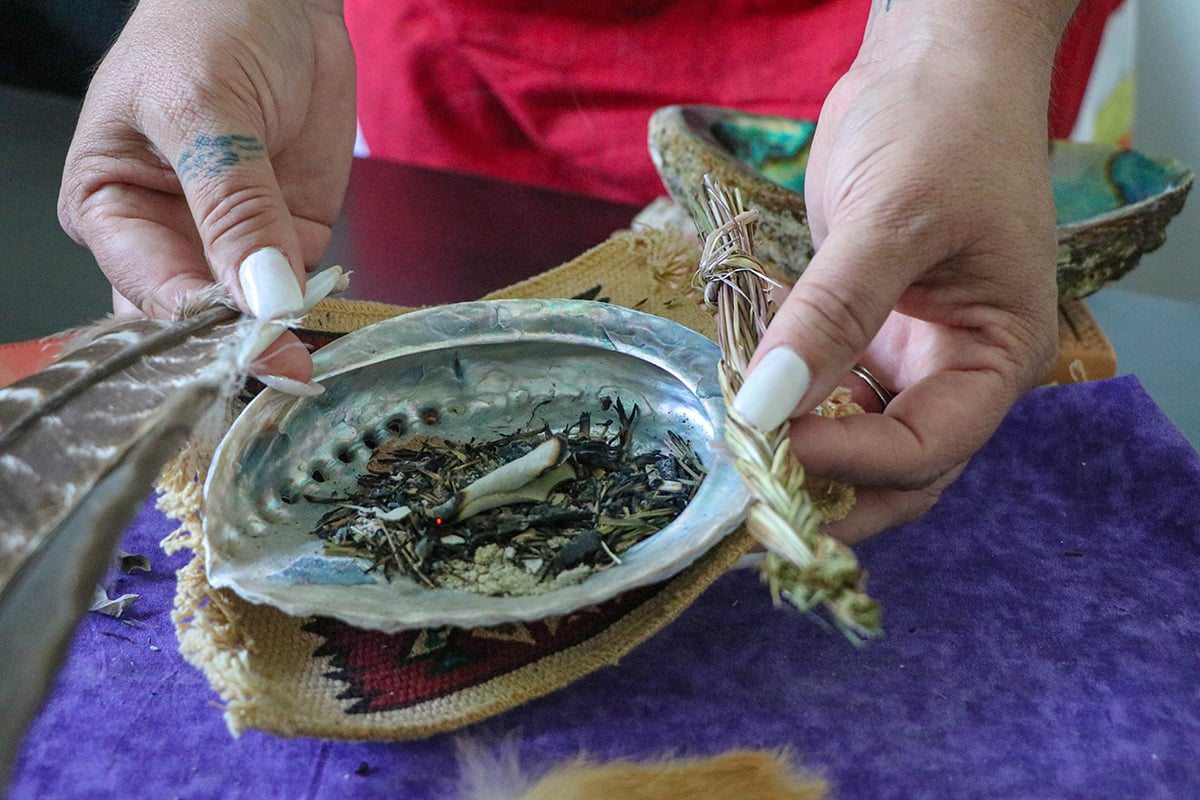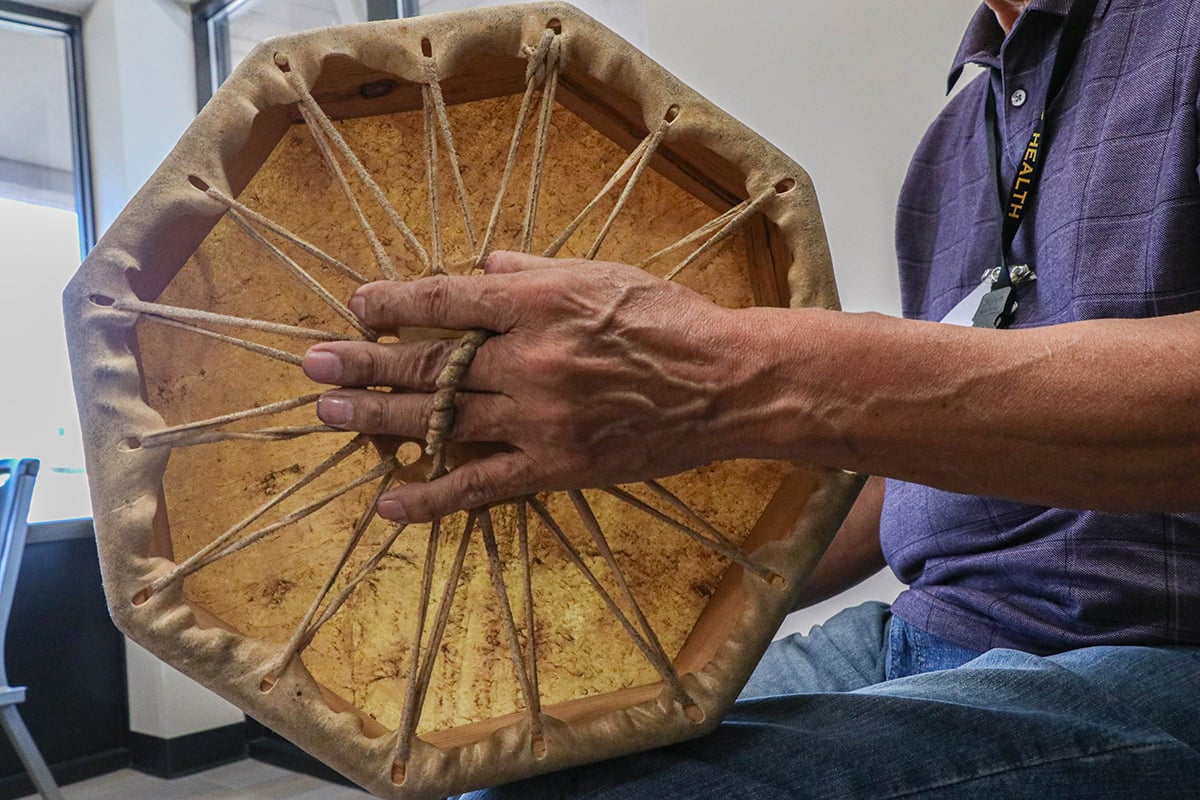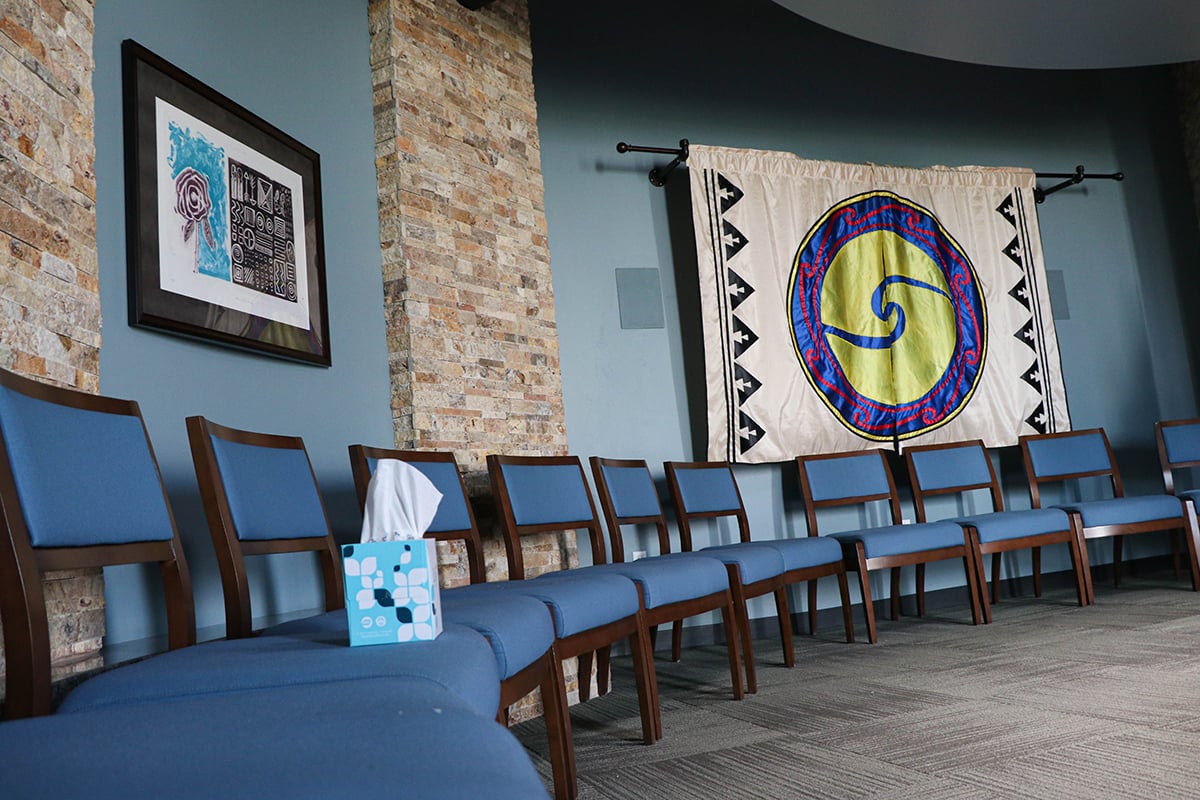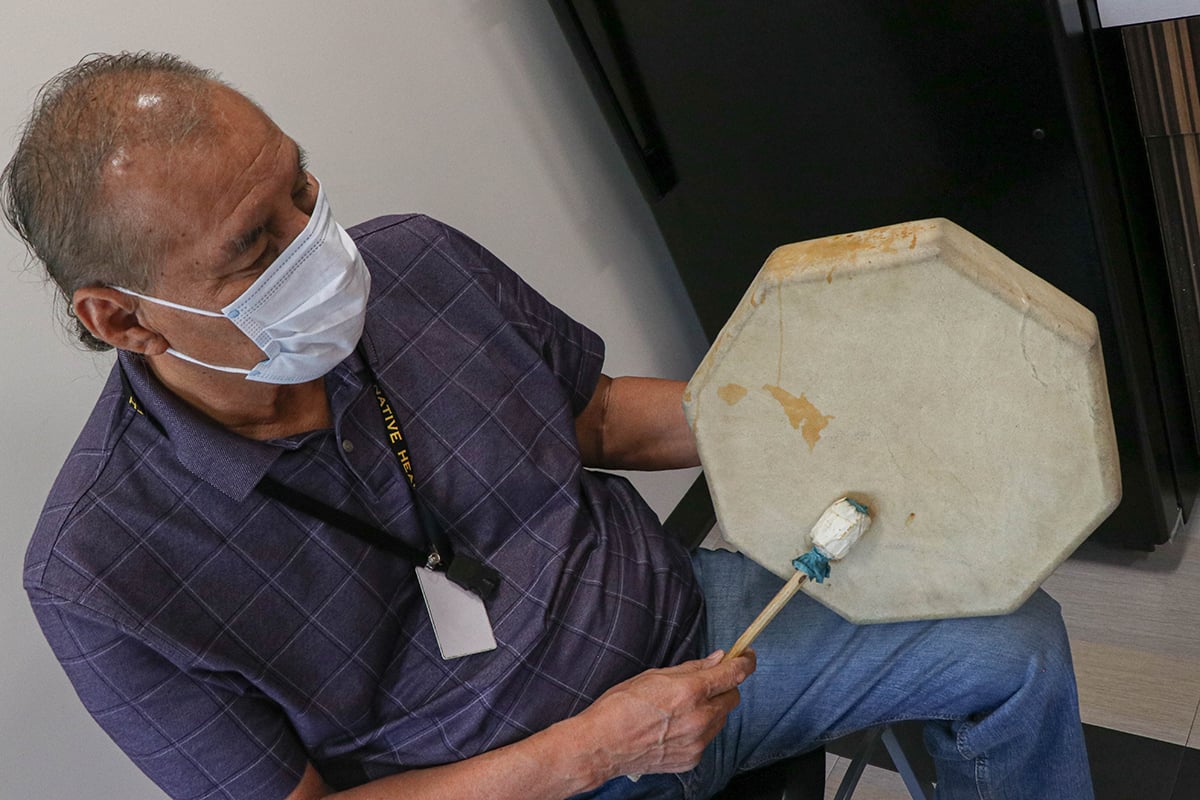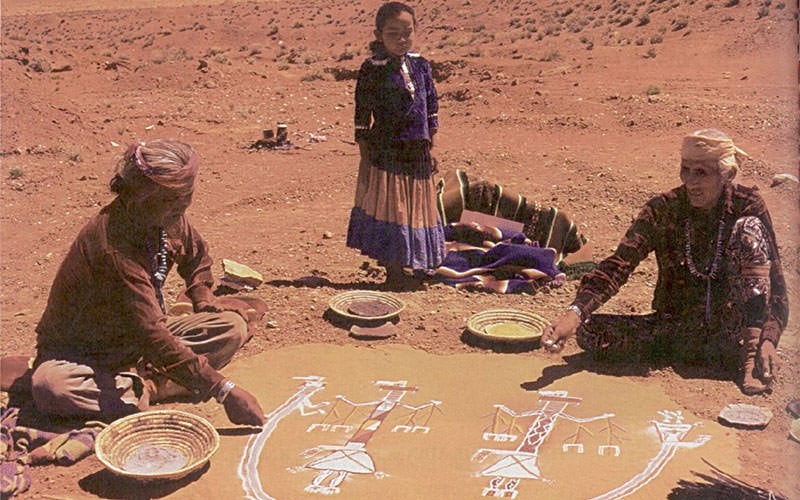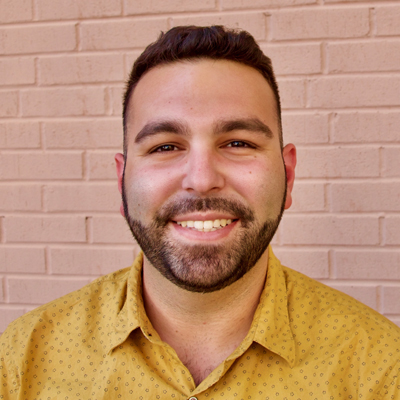Andrea Klimas is the clinical director and a talking circle facilitator at Phoenix’s Native American Connections, which provides health care and community development services.
Klimas’ talking circles offer support to clients who seek residential or outpatient treatment for substance abuse or behavioral health concerns. The organization’s Patina Wellness Center has a room dedicated to talking circles, with cushioned chairs placed around a circular skylight that shines onto a wooden floor, used as an altar during the practice. Weekly circles continued over the past year, with social distancing and mask requirements in place.
Even with modifications made for COVID-19, Klimas still leads her circles the way she usually does. She sets up an altar with items representing earth, fire, wind and water, and she always starts with a smudging – the burning of dried herbs, which she said provides a “calming perspective.” She also brings an eagle feather that each participant holds while sharing; it serves as a “telephone line” to whatever higher power the speaker seeks to communicate with.
Klimas starts and ends her circles with affirmations.
“I’m strong, I’m teachable, I’m lovable, I’m worthy,” she often tells women. And for groups of mostly men, she might offer: “I’m humble, I can be that protector, I can walk away from a challenge that can lead me to further troubles.”

Andrea Klimas, the clinical director at Native American Connections, facilitates weekly talking circles at the Patina Wellness Center in Phoenix. (Photo by Gianluca D’Elia/Cronkite News)
In Denver, the Colorado Coalition for the Homeless introduced a series of outdoor talking circles at a park last year. Before the pandemic, Teresa Bernie, an Ihanktonwan Nakota talking circle facilitator, held sessions three days a week for up to 25 people. Going virtual wasn’t a viable option for the population she works with, Bernie said.
“People loved that we could still gather,” she said. “Because we’re urban, we gather to stay connected to our culture, and that means gathering to share food and prayer and just to visit and keep close connections with one another.”
Johnston, of Native Health, has helped facilitate the virtual talking circle with ASU students. The process is much the same online: The circle starts with a greeting and the purification ritual of smudging with cedar sage, and includes prayers, songs, storytelling and individual sharing.
Native Health has been mailing sage bundles to circle participants who request them. And in place of a traditional water blessing at the end, the Zoom participants each drink a glass of water.
Catalina Alvarez Flores, 24, a member of the Pascua Yaqui Tribe, joined after losing her aunt to COVID-19, along with some elders she had known since she was young.
“I didn’t really know how to cope because of so much going on in the world,” said Flores, who studies anthropology and family and human development. “You’re constantly seeing things in the media – how many deaths per day, a lot of negativity.
“I wanted to find a place that had kind of an Indigenous perspective to talk about these issues, especially with a lot of Indigenous communities being affected by the pandemic in higher numbers.”

